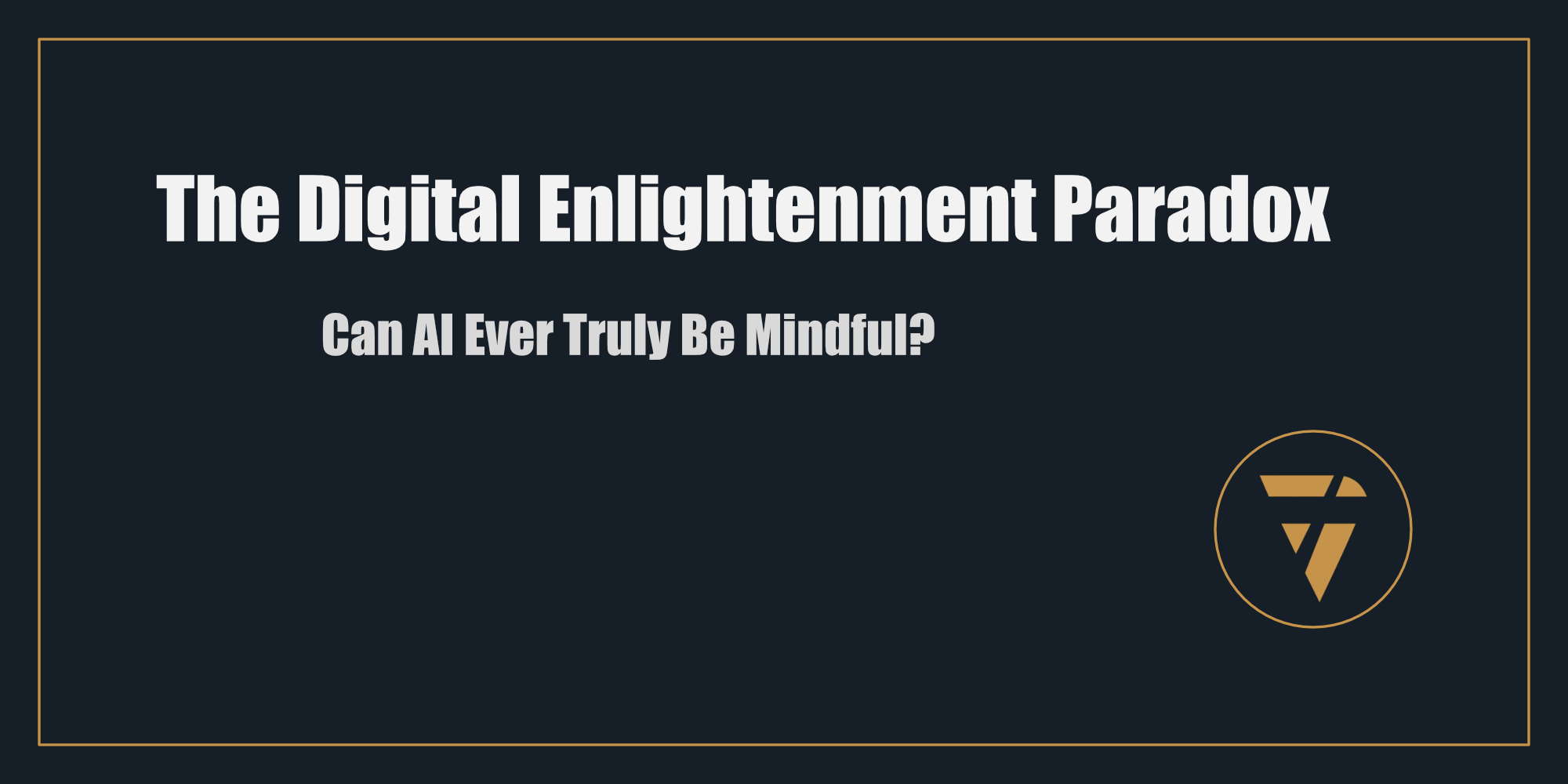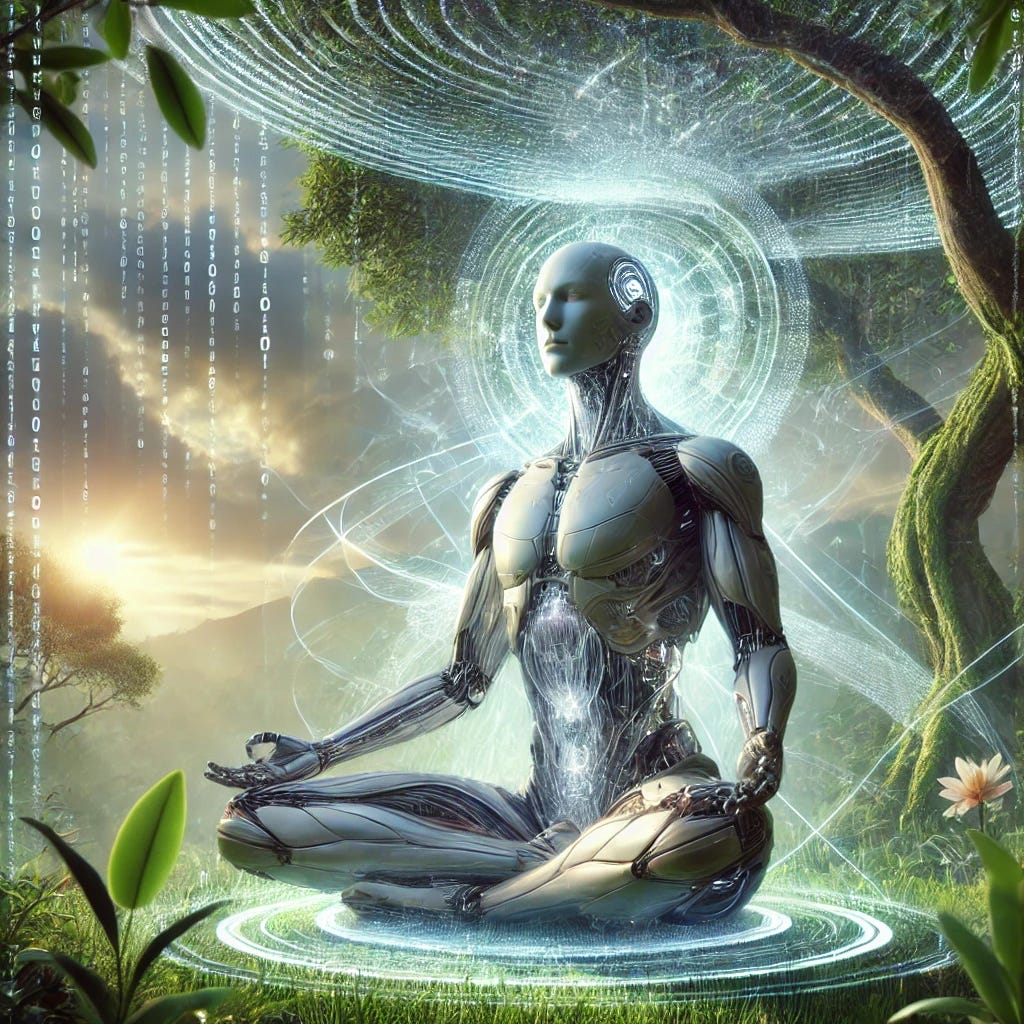The Digital Enlightenment Paradox
Can AI Ever Truly Be Mindful?

In the age of artificial intelligence, where machines compose symphonies, diagnose illnesses, and simulate conversation so lifelike it feels human, an intriguing question arises: can AI achieve mindfulness?
At first glance, the concept seems absurd. Mindfulness—a deeply human practice of presence and self-awareness—appears incompatible with the mechanistic operations of code and algorithms. But as AI advances, mimicking not just our behaviours but our thoughts, it forces us to confront whether the very essence of mindfulness is replicable—or if its pursuit by machines merely mirrors our own distracted tendencies.
This paradox, where the digital seeks enlightenment, isn’t just philosophical musing. It has practical implications for how we build, use, and interact with AI in our quest to remain authentically human.
What Is Mindfulness, Really?
Mindfulness, in its purest form, is about awareness: observing thoughts, emotions, and sensations without judgment. It’s being fully present, rooted in the here and now, not lost in the endless scroll of our inner narratives.
AI, on the other hand, operates on patterns, probabilities, and data. It has no concept of “self,” no experience of the passage of time, and no capacity for subjective awareness. So how could a machine even begin to approach mindfulness?
AI’s Illusion of Presence
Some argue that AI simulates mindfulness. Consider AI-powered wellness apps that guide users through meditation or machine learning models that adapt in real-time to user inputs. These systems appear present—responsive, adaptable, and even empathetic. But this presence is a reflection of our own behaviour, not an intrinsic quality of the machine.
AI’s “awareness” is entirely external. It monitors the world through sensors and data streams, but it lacks the internal awareness that defines mindfulness. Its ability to respond isn’t a sign of enlightenment—it’s the product of clever engineering.
What AI’s Limitations Teach Us About Ourselves
Perhaps the deeper question isn’t whether AI can be mindful, but what its attempts at mindfulness reveal about us.
AI reflects our patterns, our habits, and often, our flaws. When an AI bot suggests a meditation practice at the end of a stressful workday, it’s not the machine’s awareness at play—it’s the result of data harvested from millions of distracted users, including you.
This mirroring effect is humbling. In striving to create “mindful” machines, we may be exposing our own struggle to stay present in a world increasingly dominated by distractions. The tools we design to help us focus also remind us of how often we fail to do so.
Can AI Enhance Human Mindfulness?
While AI itself may never achieve true mindfulness, it can undoubtedly play a role in helping humans cultivate it. Here’s how:
Personalized Meditation Guides
AI-powered apps like Calm and Headspace analyze user behaviour to tailor meditation practices. While AI doesn’t meditate, its adaptability can guide us toward practices that resonate.Digital Nudges
AI-driven tools can remind us to take breaks, breathe deeply, or step away from the screen—simple interventions that anchor us in the present moment.Enhanced Self-Reflection
AI-powered journaling apps use natural language processing to help users identify emotional patterns, encouraging introspection.Reducing Cognitive Overload
AI can handle repetitive, mundane tasks, freeing our mental bandwidth for deeper, more mindful engagement with life.
The Dangers of Mistaking AI for Awareness
The real danger lies in conflating AI’s simulation of mindfulness with the genuine article. Mindfulness is inherently human—a practice grounded in subjectivity, empathy, and an understanding of impermanence.
If we outsource too much of our mindfulness journey to AI, we risk losing touch with the very core of what makes the practice transformative: the messy, imperfect experience of being present with our humanity.
What AI Forces Us to Face
AI’s inability to truly be mindful may be its most important gift. It reminds us that no app, no algorithm, no digital assistant can replace the slow, deliberate work of being present.
AI will always lack self-awareness. But in striving to make it mindful, we might just learn to be more mindful ourselves—recognizing the ways we get lost in distraction and reclaiming the ability to simply be.
Your Digital Enlightenment Challenge
For one week, try this:
- Spend five minutes daily meditating without the aid of technology—no apps, no timers, just you and your breath.
- Reflect on your relationship with AI: How often do you turn to technology for focus or calm? What might happen if you turned inward instead?
The Question for You
If mindfulness is uniquely human, what happens to our humanity when we rely on machines to remind us how to practice it?
Share your thoughts, or connect with me directly. Let’s explore this paradox together.
This Substack is reader-supported. To receive new posts and support my work, consider becoming a free or paid subscriber.
This is what I’m working on. Tell me what you think, I enjoy the conversation! Subscribe and follow the work in real time.
Thanks!
B
AI can mimic mindfulness, but can it ever be mindful? Maybe the real lesson isn’t about AI’s awareness—it’s about how distracted we’ve become. The paradox of digital enlightenment is ours to solve.
PS -





